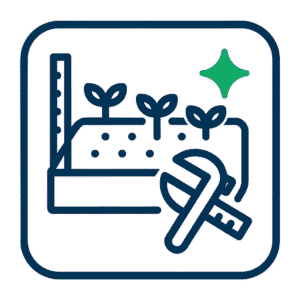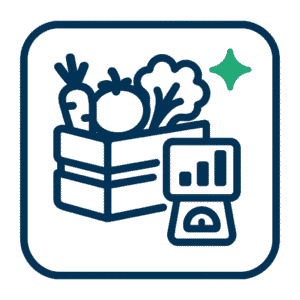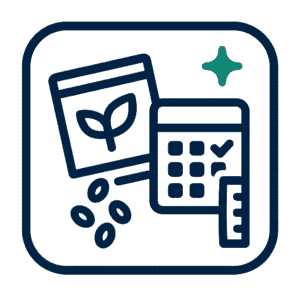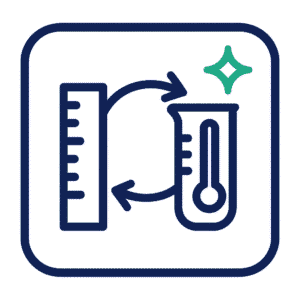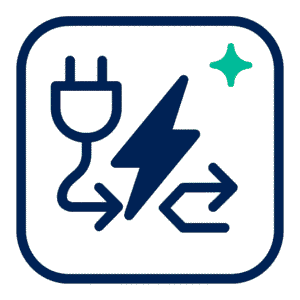Why volume matters (an economist’s view)
Raised beds are a small capital project. Material cost represents a fixed, measurable input. If topsoil is bought by the cubic yard, an understated volume causes a second delivery charge. Overstocking ties up working capital and storage space. Understocking forces hurried reorders during the planting window. Market prices for topsoil and screened loam in recent surveys range from roughly $12 to $55 per cubic yard at retail, with many local averages in the $15–$35 per cubic yard band; delivery fees commonly add $15–$60 for small loads. See national pricing summaries for additional context.
Basic formula and unit rules
A rectangular raised bed’s soil volume in cubic feet is computed as:

Volume (ft³) = Length (ft) × Width (ft) × Depth (ft)
To convert cubic feet to cubic yards the conversion is:
1 cubic yard = 27 cubic feet
Therefore:
Volume (yd³) = Volume (ft³) ÷ 27
These two equations form the core calculator. An identical approach works for circular beds; replace the rectangular area with π × radius².
Practical steps (step-by-step)
- Measure bed exterior length and width in feet.
- Decide target soil depth in inches; convert to feet by dividing by 12. Common targets include 6″, 8″, 12″, 18″ and 24″.
- Compute cubic feet with the formula above.
- Convert to cubic yards by dividing by 27. Round up to the next 0.1 yd³ for ordering convenience.
- Add a contingency allowance of about 10% for settling and spreading losses when filling new beds or when mixing layered materials.
Typical target depths and agronomic context
Raised bed depth choices reflect root systems and management preferences. Extension services give practical guidance:
- A shallow bed of about 6–8 inches is adequate for many leafy greens and shallow-rooted herbs.
- A 12-inch profile suits most common vegetables, providing adequate rooting volume for tomatoes and many annuals.
- Deep beds (18–24 inches) are useful for root crops and for gardeners seeking higher water retention and reduced compaction.
For technical detail on bulk density and its relationship to soil weight and compaction, see the USDA Natural Resources Conservation Service guidance: “Bulk density is an indicator of soil compaction. It is calculated as the dry weight of soil divided by its volume.” (USDA NRCS: Soil Quality — Bulk Density).
Weight and ordering: how many tons or pounds?
Bulk density varies with texture and organic matter. The USDA notes that a medium textured soil with about 50 percent pore space will have a bulk density near 1.33 g/cm³. Converting bulk density to pounds per cubic foot uses the relation 1 g/cm³ ≈ 62.43 lb/ft³; a 1.2–1.33 g/cm³ range implies roughly 75–83 lb/ft³. Multiply by 27 to obtain weight per cubic yard; this yields an approximate range of 2,000–2,300 lb per cubic yard for loose, mineral-rich topsoil. Use those figures when a supplier quotes weight limits or when truck capacity drives pricing.
Example calculations (worked examples)
Example A: one 4 ft × 8 ft bed at 12 in depth — Depth: 12 in = 1 ft. Volume = 4 × 8 × 1 = 32 ft³. Cubic yards = 32 ÷ 27 = 1.185 yd³. Order 1.3 yd³ to include 10% contingency. Estimated weight ~1.3 × 2,000 lb = 2,600 lb. Cost at $25/yd³ = $32.50 material; add delivery.
Example B: two beds 3 ft × 6 ft at 18 in depth each — Depth: 18 in = 1.5 ft. Volume per bed = 3 × 6 × 1.5 = 27 ft³. Both beds = 54 ft³. Cubic yards = 54 ÷ 27 = 2 yd³. Add 10% buffer → 2.2 yd³. Estimated cost at $30/yd³ = $66 (material).
These worked examples show that many common home raised beds fall between one and three cubic yards of soil. Bulk purchase discounts commonly appear above 5–10 yd³; compare per-yard pricing when planning larger projects (see market summaries such as HomeAdvisor: Cost of Delivering Soil and price guides like The Spruce: Yard of Dirt — Size and Cost).
Ordering strategy and delivery logistics
- Prefer suppliers who provide both volume and weight estimates. Use the weight estimate to ensure the delivery truck can handle the load.
- If local vendors sell bagged topsoil, check coverage metrics: a 40-lb bag frequently covers about 12 ft² at 1 in depth. Bulk purchases become economical for more than small patches.
- Schedule delivery with a clear drop point. If a second load becomes necessary, confirm delivery charges before accepting.
Industry pricing guides and local suppliers list per-yard and delivery fees; obtain written quotes for material type (screened topsoil, loam, compost-amended mixes) and confirm whether quoted volume is loose or compacted.
Integrating soil calculations with planting schedules and layout planning
Material planning should link to planting operations. Several web tools assist integrated planning:
- Timing and frost dates: use a frost date calculator (for example, The Old Farmer’s Almanac) to support planning of when to plant vegetables by zone and to find the best sowing dates for my zone.
- Layout and spacing: use a garden spacing calculator for raised beds such as VegPlotter to compute plant counts given spacing rules.
- Companion and calendar planning: tools like GrowVeg and Smart Gardener provide companion planting planners and can calculate approximate harvest windows, supporting workflows to calculate harvest dates by planting.
- Seed-level detail: consult extension seed depth and spacing guides (for example, the Penn State Vegetable Planting Guide and the UMN Extension starting seeds guidance) for a reliable seed depth and spacing guide and for building a seed sowing schedule per climate.
- Irrigation and maintenance: integrate the bed rooting volume with a watering schedule by plant type so that irrigation frequency and volumes align with available soil water in the specified depth.
Practical adoption checklist
- Measure beds and compute volumes in cubic feet, then convert to cubic yards.
- Decide bed depth according to crop types and reference extension recommendations.
- Add a 10% contingency for settling.
- Translate cubic yards into expected weight using a conservative bulk density (estimate ~2,000 lb/yd³).
- Query local suppliers for per-yd³ pricing and delivery. Compare bagged vs bulk economics for small projects.
- Align the filling schedule to a seed sowing schedule per climate and to a frost date calculator so soil is in place before planting operations begin.
Verbatim perspective from authorities
The USDA technical guidance states: “Bulk density is an indicator of soil compaction. It is calculated as the dry weight of soil divided by its volume.” See the USDA NRCS briefing for measurement and interpretation guidance: Soil Quality — Bulk Density (USDA NRCS).
Wendell Berry captured a cultural perspective on soil: “The soil is the great connector of lives, the source and destination of all. It is the healer and restorer and resurrector, by which disease passes into health.” For context, see Berry’s The Unsettling of America: Culture & Agriculture (publisher’s entry): Penguin Random House — The Unsettling of America.
Final Considerations
The arithmetic that supports a soil order is straightforward. The non-trivial elements are margin assumptions and the alignment of material logistics with the planting calendar. Use the basic volume formula, convert to cubic yards, allow for settling and compaction, and then reconcile material weight against supplier and vehicle constraints. Combine those steps with digital tools such as a garden spacing calculator for raised beds, a frost date calculator for gardeners and a companion planting planner online. Integrate irrigation guidance so the watering schedule by plant type matches the rooting volume that has been supplied. Practical budgeting benefits from market checks of per-yd³ pricing and from converting bulk cubic yards into pounds for realistic delivery expectations. With simple arithmetic, a small contingency and coordinated planning, a raised bed project becomes an efficient deployment with predictable costs and measurable agronomic outcomes.

